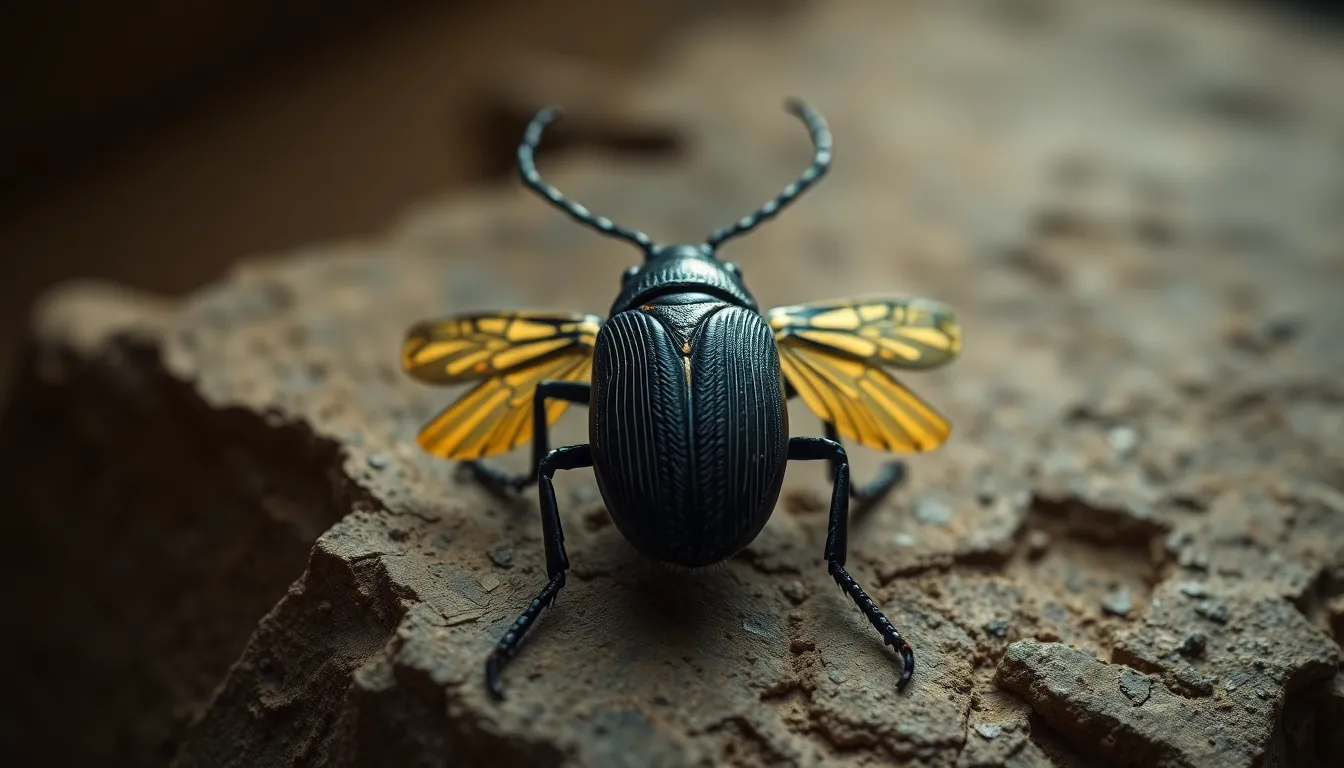The Spiritual Importance of the Egyptian Scarab
I. Introduction
The scarab beetle holds a prominent place in ancient Egyptian culture, symbolizing various aspects of life, death, and rebirth. This small yet powerful insect was revered not only for its physical attributes but also for its deeper spiritual significance. The scarab is a powerful symbol of transformation, protection, and resurrection, reflecting core beliefs and practices in ancient Egyptian spirituality.
II. Historical Context of the Scarab in Ancient Egypt
The origins of the scarab as a symbol in ancient Egypt date back to the early dynastic period, around 3000 BCE. The beetle, specifically the species Scarabaeus sacer, was associated with the sun’s daily journey across the sky. Ancient Egyptians observed the beetle rolling balls of dung, which they interpreted as a metaphor for the sun’s movement, leading to its spiritual reverence.
The significance of the scarab can be seen in various forms of art, jewelry, and architecture. Scarab motifs adorned:
- Statues and reliefs in temples
- Amulets worn by individuals for protection
- Funerary objects to assist in the afterlife
This widespread use highlights the beetle’s importance in daily life and spiritual practice.
III. Symbolism of the Scarab Beetle
The scarab beetle symbolizes the cycle of life and death, closely associated with the sun god Ra. As the sun rises and sets, it mirrors the actions of the scarab, which rolls the dung ball, representing the sun’s journey across the sky. This connection makes the scarab a powerful symbol of:
- Rebirth
- Regeneration
The transformation of the beetle from a larva to a mature beetle also reflects the belief in life after death, making it a potent icon for the ancient Egyptians.
IV. The Scarab in Egyptian Mythology
One of the most significant myths involving the scarab is the story of Khepri, a manifestation of the sun god Ra. Khepri was often depicted as a man with a scarab head, representing the morning sun and the concept of creation. As Khepri rolled the sun across the sky, he symbolized:
- The creation of the world
- The eternal cycle of life and renewal
This mythological framework established the scarab as a central figure in creation myths and the cosmic order, emphasizing its role in the ongoing cycle of existence.
V. Spiritual Practices Involving the Scarab
Scarab amulets were commonly used in ancient Egyptian spiritual practices for protection and good fortune. These amulets were believed to:
- Guard against evil forces
- Bring prosperity and success
Rituals and ceremonies often incorporated the scarab symbol, with priests and practitioners invoking the beetle’s protective qualities during important events such as:
- Weddings
- Initiations
The scarab symbolized a bridge between the physical and spiritual worlds, offering comfort and assurance to the living and the deceased alike.
VI. The Scarab in Funerary Practices
In ancient Egyptian funerary practices, scarabs played a crucial role in burial rituals and tomb decorations. Scarab amulets were placed among the wrappings of mummies, ensuring safe passage into the afterlife. The significance of the scarab in this context is profound, as it was believed to:
- Guide the deceased through the underworld
- Assist them in overcoming challenges faced in the afterlife
Decorations featuring scarabs were common in tombs, symbolizing the hope for rebirth and eternal life, reinforcing the belief in the continuity of existence beyond death.
VII. Modern Interpretations and Legacy of the Scarab
The influence of the scarab symbol continues in contemporary spirituality and art. Today, the scarab is regarded as a universal symbol of transformation and renewal, resonating across various cultures. Artists and spiritual practitioners often incorporate the scarab into:
- Jewelry designs
- Artistic representations
This enduring legacy highlights the scarab’s timeless message of hope, resilience, and the cyclical nature of life.
VIII. Conclusion
In summary, the spiritual importance of the scarab in ancient Egypt is multifaceted, symbolizing transformation, protection, and resurrection. Its deep roots in mythology, art, and spiritual practices reflect the ancient Egyptians’ profound respect for the cycles of life and death. As we reflect on the legacy of the scarab today, it continues to inspire spiritual practices, serving as a reminder of the eternal journey of the soul.




